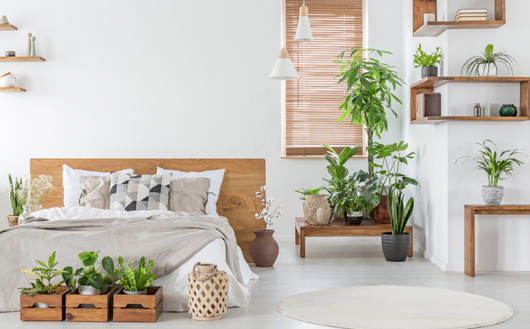When looking to buy your next home, you shouldn’t have to necessarily give up your first home if you don’t want to. Keeping the existing property gives you the option to rent it out to earn a return while you move into the upgraded new home. A helpful way to think about keeping or selling is to ask the following questions.

| What are your goals and expectations? |
|
| Do you have the financial capacity? |
|
While your broker can assist you with working out your financial capacity to keep your existing home and potentially turning it into your investment property, you also need to ask yourself whether keeping it will achieve your broader investment goals.
Also, not everyone is comfortable taking on extra debt and during particular times you might be more risk averse due to personal or market factors. If you are expecting a bonus payment, you might be ready to take on more debt. On the other hand, in a rapid rate rise environment, you might take a more risk averse approach in terms of taking on more debt.
In this ebook, we will take you through the financial capacity aspect of this equation using the same example with Johnny and Jane.
Ready to launch your next home goal?
Book an assessment with a finance broker today!

Let’s look at an example to illustrate
Say your home is worth $1M today, with a $500K loan against it, and your goal is to upgrade to a $2M new family home.
There is about $500K in “unrealised” equity in the property – which cannot be tapped into unless you undertake a “cash out” or sell the property.
If you choose to borrow against the property and conduct a cash out, at 80% LVR, there is then $300K in accessible equity.
If you chose to sell your property on the open market, there is approximately $475K (net of transaction costs) in proceeds.
Now, let’s look at what it takes to buy a $2M home. If we assume stamp duty, legal costs and other set up fees come to around $100,000, a $2M property actually costs you $2.1M once transaction costs are added.
If you are borrowing at 80% LVR, or a $1.68M loan, your contribution is roughly $420,000 to purchase a $2M property.
So, you can see you will need to have $120,000 to have enough to make up a $420,000 deposit (the rest will come from the $300,000 in equity you can access from your current). However, anything less than this, you may need to sell your current home to have to have sufficient funds.
Now, considering the outstanding loan of $500K, your total loan will come to $800K on your existing home. If you apply for a new loan of $1.68M to fund your next home purchase, the total debt becomes $2.48M.
At 5.5% pa over a 30-year term, you will be paying a total of $14,081 each month in repayments ($4,542 on the $800K loan plus $9,539 on the $1.68M loan).
When applying for a loan, the bank will add a servicing buffer of 3% on top of the actual interest rate (i.e. 5.5% + 3% = 8.5%). Hence, you will have to convince the bank you can afford loan repayments of $18,454 per month based on your net income.
| Old Home (Now investment property) | New Home | Total | |
|---|---|---|---|
| Property value | $1,000,000 | $2,000,000 | $3,000,000 |
| Loan amount | $800,000 | $1,600,000 | $2,400,000 |
| LVR | 80% | 80% | 80% |
| Actual interest rate | 5.50% | 5.50% | 5.50% |
| Monthly repayments | $4,542 | $9,085 | $13,627 |
Let’s say in your current situation, you are not able pass the bank’s servicing test and you choose the path of selling your existing home to be able purchase the next home. However, due to timing differences, your existing home is still on the market for sale, and you haven’t yet got the net proceeds to pay towards the new home. In this situation, a bridging loan can provide a solution for you.
Download the Ultimate Guide to Buying Your Next Home
